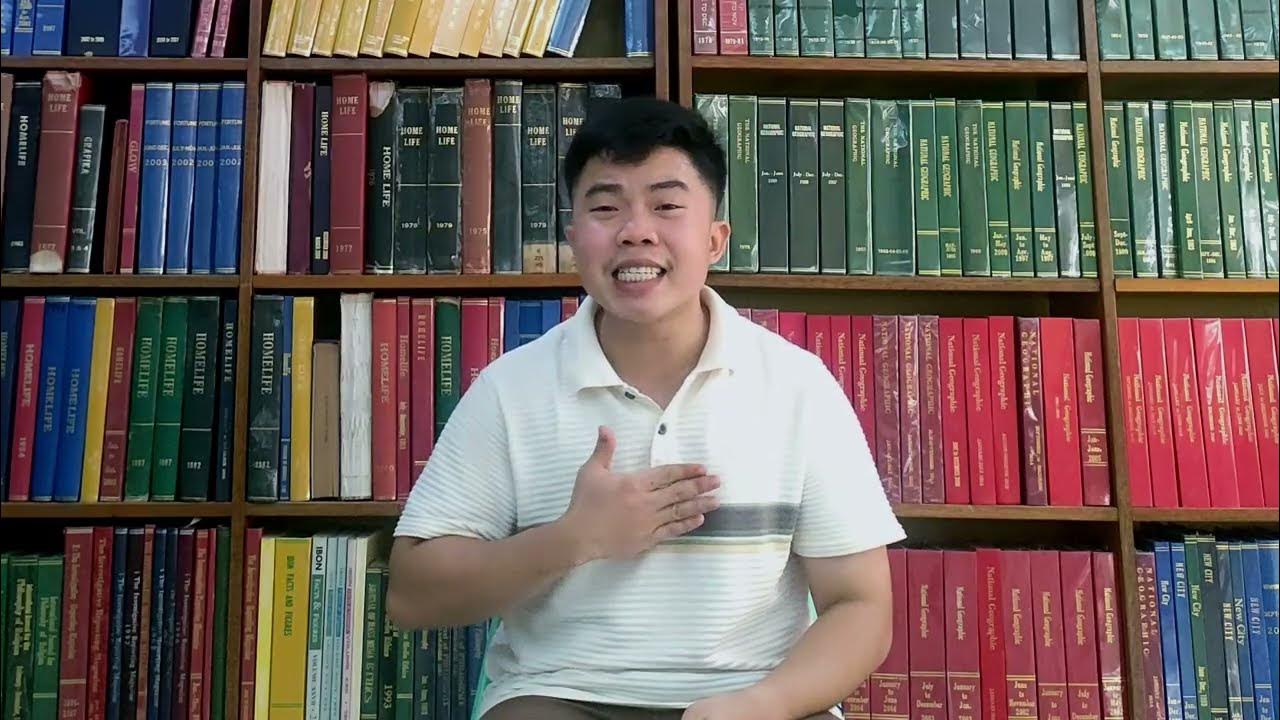ASEAN Youth Video Speech Challenge - Francine Wayas
Summary
TLDRIn this speech, Francine Was discusses the growing issue of plastic pollution in the Philippines, where only 28% of plastic waste is recycled. She emphasizes three key strategies to combat the problem: utilizing alternative materials from natural resources like banana leaves, promoting a holistic and inclusive approach to policy-making by involving local communities, and ensuring the participation of all relevant stakeholders, including the youth and indigenous groups. These efforts aim to reduce plastic waste and create sustainable solutions for future generations.
Takeaways
- 😀 Only 28% of plastic waste is recycled in the Philippines as of 2025, with 2.3 million tons of plastic waste generated annually.
- 😀 The fight against plastic pollution requires more than just the traditional 'reduce, reuse, recycle' method.
- 😀 Maximizing resources and utilizing alternative materials, like banana leaves for food packaging, can help reduce plastic waste.
- 😀 The Philippines, being part of the Pacific Ring of Fire, is blessed with natural resources that should be used sustainably and innovatively.
- 😀 A holistic approach, including the consideration of local culture, needs, and attitudes, is essential in combating plastic pollution.
- 😀 It's important to involve local communities in discussions about plastic pollution and integrate their solutions into policy-making.
- 😀 Policy creation should be inclusive, considering the needs and perspectives of all affected groups, including marginalized communities.
- 😀 Engaging a wide range of stakeholders—such as government, business leaders, and local advocates—is crucial in addressing plastic pollution.
- 😀 Youth and indigenous communities should have platforms to voice their struggles with plastic pollution and be part of the solution.
- 😀 Small, community-based actions can lead to significant positive impacts in the fight against plastic pollution, making a collective difference over time.
Q & A
What percentage of plastic waste is recycled in the Philippines as of 2025?
-As of 2025, only 28% of the plastic waste in the Philippines is recycled, from the 2.3 million tons of plastic waste produced each year.
Who is the speaker in the transcript and what is the main topic of discussion?
-The speaker is Francine Was, and the main topic of the discussion is combating plastic pollution in the Philippines.
What is the first alternative method suggested to combat plastic pollution?
-The first alternative method suggested is maximizing the use of resources and utilizing alternative materials, such as using banana leaves for packaging food instead of single-use plastic packets.
How can the Philippines' location in the Pacific Ring of Fire contribute to combating plastic pollution?
-The Philippines' location in the Pacific Ring of Fire provides access to a wide variety of natural resources, which can be used sustainably and innovatively to replace plastic materials.
What is the second approach recommended to address plastic pollution?
-The second approach is promoting a holistic and inclusive approach to policy-making, including understanding the culture, needs, and behaviors of society and involving the local population in finding solutions.
Why is it important to involve locals in the process of addressing plastic pollution?
-Involving locals is important because they can provide insights into their traditional approaches, beliefs, and behaviors regarding plastic use. This helps create more effective, context-specific, and sustainable solutions.
What is the third suggested method to tackle plastic pollution?
-The third method is to involve all relevant stakeholders in the conversation, including the government, businesses, local champions, advocates, small communities, indigenous peoples, and the youth.
How can the youth contribute to the fight against plastic pollution?
-The youth can contribute by sharing their everyday struggles with plastics and utilizing platforms and technologies to amplify their voices in the fight against plastic pollution.
What does the speaker mean by saying the 'real war' is with environmental issues?
-By saying the 'real war' is with environmental issues, the speaker emphasizes that the most pressing challenges for the future are not military conflicts, but rather issues like plastic pollution that threaten the environment and future generations.
What are the three key strategies to reduce the impact of plastic pollution, as discussed in the script?
-The three key strategies are: 1) maximizing resources and utilizing alternative materials, 2) promoting a holistic approach and inclusive innovation, and 3) involving relevant stakeholders in the discussions and policymaking process.
Outlines

This section is available to paid users only. Please upgrade to access this part.
Upgrade NowMindmap

This section is available to paid users only. Please upgrade to access this part.
Upgrade NowKeywords

This section is available to paid users only. Please upgrade to access this part.
Upgrade NowHighlights

This section is available to paid users only. Please upgrade to access this part.
Upgrade NowTranscripts

This section is available to paid users only. Please upgrade to access this part.
Upgrade NowBrowse More Related Video

ASEAN Youth Video Speech Challenge - Evani Yuni Lestari

Indonesia Penyumbang Sampah Plastik Terbesar ke-2 di Dunia!

MIRIS!! INILAH DAMPAK SAMPAH PLASTIK YANG HANYUT KE LAUTAN

ASEAN Youth Video Speech Challenge - Richmon Rey Jundis

Pengolahan Limbah Sampah Plastik SMP TEUKU NYAK ARIF FATIH BILINGUAL SCHOOL ACEH

How Waste Plastic is Converted into Fuel
5.0 / 5 (0 votes)